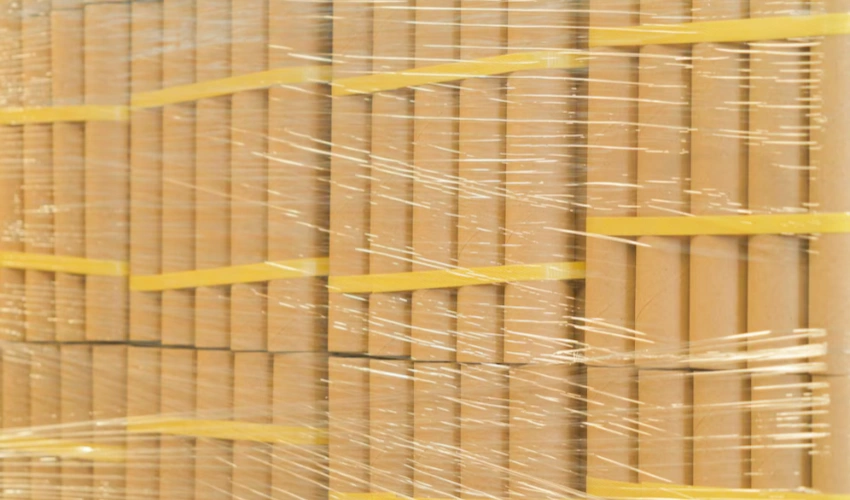

Flexible, stretchable, highly tear-resistant – easy to store, handle and efficient pallet packaging.

Reduce your environmental impact-designed to be recyclable.

Replace single-use plastic pallet packaging with environmentally friendly paper packaging.
Sustainable packaging has become a critical focus in the modern supply chain, with companies increasingly prioritizing eco-friendly solutions. Recycled pallet wrap has emerged as a leading alternative to traditional plastic wraps, offering a more sustainable approach to securing goods during transport and storage. As businesses strive to reduce their environmental footprint, the demand for recycled pallet wrap has grown significantly. This eco-conscious option not only helps minimize waste but also supports the global shift away from single-use plastics. By adopting recycled pallet wrap, companies contribute to a circular economy while ensuring their packaging needs are met without compromising on performance. Recycled pallet wrap, made from post-consumer or marine plastics, offers strong stretch, adhesion, and eco-friendly benefits to reduce plastic waste.
Every year, a staggering 2.3 million tons of plastic pallet wrap choke U.S. landfills – equivalent to wrapping the Earth’s equator 1,800 times (EPA, 2023). American businesses face a critical dilemma: Can eco-friendly alternatives like recycled pallet wrap deliver both environmental benefits and operational reliability?
In an era where sustainability is no longer optional but a business imperative, recycled pallet wrap has emerged as a critical solution for companies aiming to reduce their environmental footprint while maintaining operational efficiency. With the U.S. generating over 35 million tons of plastic waste annually (EPA, 2023) and only 5% of plastic packaging being effectively recycled, the shift to recycled stretch film is not just a trend—it’s a necessity. Here’s why this innovation matters:
Traditional virgin plastic pallet wrap contributes significantly to landfill waste and ocean pollution. Recycled pallet wrap, made from post-industrial or post-consumer plastic waste, diverts thousands of tons of plastic from landfills annually. For example:
By closing the loop through closed-loop recycling programs, businesses ensure used wraps are collected, processed, and remanufactured—creating a circular lifecycle that aligns with global sustainability goals like the UN’s SDG 12 (Responsible Consumption and Production).
A common misconception is that recycled products are inferior in quality. Modern recycled pallet wrap, however, matches the performance of virgin plastic in key areas:
A 2023 case study by Green Supply Chain Magazine found that a Midwest logistics firm cut annual packaging costs by $18,000 after switching to recycled wrap and implementing a take-back recycling program.
U.S. regulations are increasingly targeting plastic waste:
Recycled pallet wrap not only helps businesses comply with these laws but also future-proofs operations against stricter regulations. For instance, Procter & Gamble avoided $2 million in potential fines by transitioning to 100% recycled packaging materials ahead of deadlines.
With 68% of U.S. consumers willing to pay more for sustainably packaged products (Nielsen, 2023), adopting recycled pallet wrap enhances brand loyalty:
A 2024 survey by Sustainable Brands revealed that 82% of B2B buyers prioritize suppliers with verifiable sustainability practices—making recycled wraps a strategic differentiator in contracts.
Sourcing recycled pallet wrap domestically supports the U.S. recycling industry and reduces carbon footprints:
Recycled pallet wrap is not merely an eco-friendly alternative—it’s a smart business decision. From slashing costs and complying with regulations to building consumer trust and driving innovation, its impact resonates across environmental, economic, and social dimensions. As circular economy models gain momentum, businesses that adopt recycled packaging today will lead the market tomorrow.
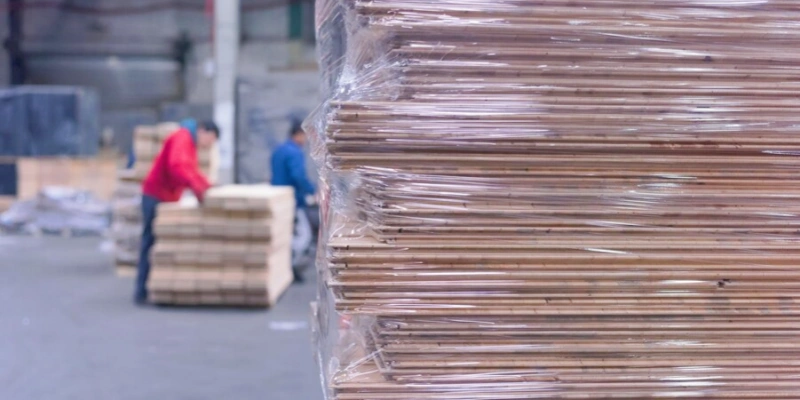
Adopting recycled pallet wrap is more than an environmental gesture—it’s a strategic financial decision. Below, we break down the costs, savings, and long-term advantages of switching from virgin plastic to recycled stretch film, supported by industry data and real-world case studies.
Initial Price Premium
Additional Setup Costs
Reduced Waste Disposal Fees
Lower Material Consumption
Tax Incentives and Grants
Extended Producer Responsibility (EPR) Compliance
ESG-Driven Investor and Customer Appeal
Risk Mitigation
While harder to monetize, eco-benefits translate to indirect financial gains:
Scenario: Mid-sized logistics company using 10 tons of pallet wrap annually.
| Cost/Saving Factor | Virgin Plastic | Recycled Wrap |
|---|---|---|
| Material Cost | $18,000 | $21,600 (+20%) |
| Waste Disposal Fees | $5,500 | $0 (take-back) |
| Tax Incentives | $0 | $2,500 |
| Carbon Credit Savings | $0 | $315 |
| Total Annual Cost | $23,500 | $18,785 |
Net Annual Savings: $4,715 (20% cost reduction).
Payback Period: 1–2 years (factoring in retrofitting/training costs).
While recycled pallet wrap requires an initial investment, its long-term financial benefits—from waste fee elimination and tax breaks to enhanced market competitiveness—deliver a compelling ROI. Combined with regulatory compliance and brand equity gains, the switch positions businesses as sustainability leaders while strengthening their bottom line.
The pallet wrap industry is undergoing a revolution, driven by nano-layer reinforcement—a cutting-edge innovation that addresses the historical trade-off between sustainability and performance. By embedding nanotechnology into recycled plastics, manufacturers are creating stretch films that rival (and often surpass) virgin plastic in strength, durability, and versatility. Here’s how this breakthrough is reshaping the future of packaging:
Nano-layer reinforcement involves stacking ultra-thin polymer layers (as thin as 1–100 nanometers) infused with nanoparticles like:
Production Process:
A 2024 study by Packaging Science International compared nano-reinforced wraps to standard recycled films:
| Property | Standard Recycled Wrap | Nano-Reinforced Wrap | Improvement |
|---|---|---|---|
| Tensile Strength (MPa) | 25 | 38 | +52% |
| Puncture Resistance (N/mm) | 12 | 18 | +50% |
| Load Holding Capacity (lbs) | 2,000 | 3,200 | +60% |
| Temperature Tolerance (°F) | -20 to 120 | -40 to 150 | +30°F range |
Key Benefits:
Contrary to concerns about recyclability, nano-reinforced wraps are designed for circularity:
Case Study:
Nano-layer reinforcement is not just a technological leap—it’s a game-changer for businesses seeking to align profitability with planetary responsibility. By merging recycled materials with atomic-scale innovation, this breakthrough eliminates the “eco vs. performance” dilemma, paving the way for a waste-free supply chain.
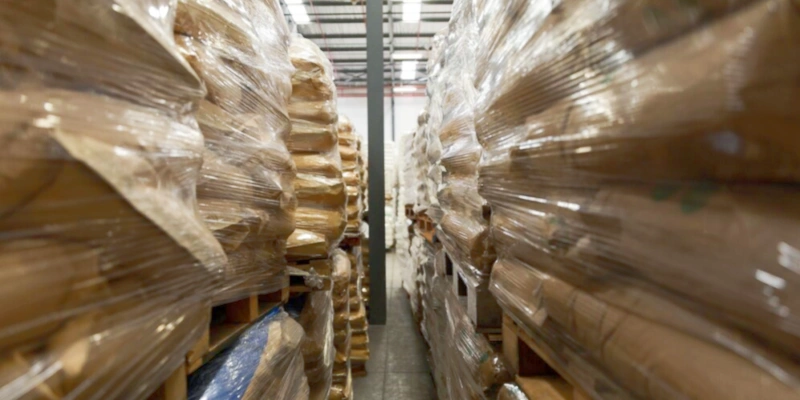
The recycled content of pallet wrap is a critical metric for businesses aiming to reduce plastic waste and meet sustainability goals. This section explores how recycled content is defined, measured, and certified, along with its practical implications for performance and compliance.
Recycled content refers to the percentage of a product made from post-consumer (PCR) or post-industrial (PIR) materials:
Example:
A pallet wrap labeled “80% recycled content” may contain:
To combat greenwashing, third-party certifications validate recycled content claims:
| Certification | Key Requirements | Relevance |
|---|---|---|
| SCS Recycled Content | Verifies PCR/PIR ratios via supply chain audits. | Ensures transparency for B2B buyers. |
| UL ECOLOGO | Requires ≥25% PCR content for stretch films. | Aligns with EPA procurement guidelines. |
| Cradle to Cradle (C2C) | Rates products on material health and reuse. | Preferred by Fortune 500 companies. |
Regulatory Drivers:
| Product Type | Recycled Content | Performance Impact |
|---|---|---|
| Entry-Level Recycled Wrap | 30–50% (mostly PIR) | May require thicker gauges for strength. |
| High-Performance Wrap | 70–100% (PCR+PIR) | Uses nano-tech additives to match virgin plastic. |
| Closed-Loop Custom Blends | 90–100% (PIR) | Made from in-house scrap, zero waste. |
Step 1: Request a Material Composition Report from suppliers, detailing PCR/PIR ratios.
Step 2: Check for Chain of Custody (CoC) Certificates (e.g., SCS or ISCC PLUS).
Step 3: Audit via third parties like EcoVadis or GreenCircle Certified.
Red Flags:
Math in Action:
If a U.S. warehouse uses 5 tons of 70% PCR wrap annually:
Higher recycled content in pallet wrap directly translates to reduced plastic pollution, lower carbon emissions, and compliance with tightening regulations. By prioritizing certified, high-percentage PCR/PIR products, businesses future-proof their operations while building authentic sustainability narratives.
From cutting costs to future-proofing operations, recycled pallet wrap delivers tangible advantages for businesses. Below are the top benefits backed by industry data and real-world examples:
By embracing recycled pallet wrap, companies don’t just “go green”—they build resilience, trust, and profitability in a plastic-conscious market.
The terms “Recycled Stretch Wrap 55” and “Recycled Stretch Wrap 90” typically refer to products differentiated by their recycled content percentages (55% vs. 90%) or performance grades (e.g., micron thickness). Below, we break down their features, best-use scenarios, and sustainability impacts for U.S. businesses.
Industry Context: Most U.S. suppliers use numbers to denote recycled content, not thickness. For clarity, assume 55% and 90% recycled content unless specified as gauge.
| Feature | Recycled Stretch Wrap 55 | Recycled Stretch Wrap 90 |
|---|---|---|
| Recycled Content | 55% (mix of PCR/PIR) | 90%+ (primarily PCR) |
| Virgin Plastic | 45% virgin resin | ≤10% virgin resin (for bonding) |
| Certifications | SCS, UL ECOLOGO | Cradle-to-Cradle Platinum, TRUE Zero Waste |
| Cost | 10–15% premium over virgin | 25–30% premium over virgin |
| Carbon Footprint | 40% lower vs. virgin | 70% lower vs. virgin |
| Best For | General logistics, moderate sustainability goals | Zero-waste mandates, ESG-driven brands |
Recycled Stretch Wrap 55
Recycled Stretch Wrap 90
| Metric | 55% Recycled Wrap | 90% Recycled Wrap |
|---|---|---|
| Waste Diverted/Ton | 550 kg | 900 kg |
| CO₂ Saved/Ton | 1.2 tons | 2.1 tons |
| Water Saved | 30% less vs. virgin | 60% less vs. virgin |
Case Study:
| Metric | 55% Recycled Wrap | 90% Recycled Wrap |
|---|---|---|
| Waste Diverted/Ton | 550 kg | 900 kg |
| CO₂ Saved/Ton | 1.2 tons | 2.1 tons |
| Water Saved | 30% less vs. virgin | 60% less vs. virgin |
Tip: Use the EcoCostCalculator tool to model savings based on your pallet volume.
Final Advice: Start with 55% to build stakeholder buy-in, then phase in 90% as ROI justifies the shift. Both options signal progress in the $1.2T U.S. sustainable packaging market.
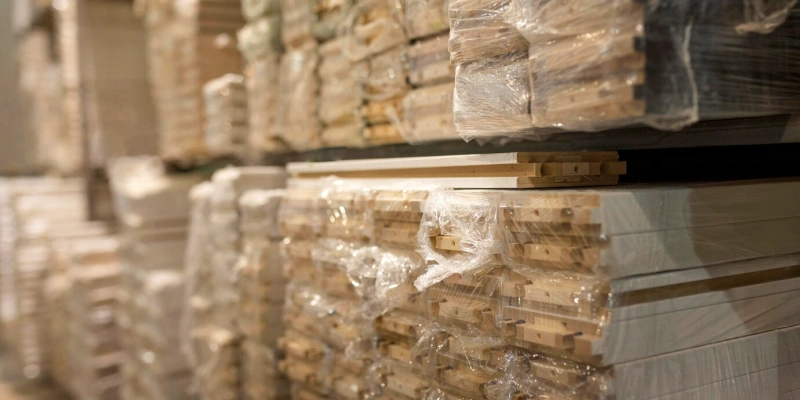
Selecting the ideal recycled stretch film involves balancing sustainability, performance, and budget. Here’s a data-driven framework to help businesses make informed decisions:
Key Questions:
Decision Tools:
| Recycled Content Tier | Best For | Certifications to Seek |
|---|---|---|
| 30–50% | Budget-conscious starters | SCS Recycled Content, UL ECOLOGO |
| 50–80% | ESG-focused mid-sized firms | TRUE Zero Waste, ISO 14021 |
| 80–100% | Zero-waste mandates | Cradle-to-Cradle Platinum |
Must-Have Certifications:
Red Flags:
Action Step: Request a Technical Data Sheet (TDS) and Material Safety Data Sheet (MSDS).
Performance Metrics:
Cost Analysis:
| Factor | Low Recycled (30–50%) | High Recycled (80–100%) |
|---|---|---|
| Material Cost/Ton | 2,500–2,800 | 3,300–3,800 |
| Waste Fee Savings/Year | 5,000–8,000 | 10,000–15,000 |
| Tax Credits (EPA/State) | Up to $2,000 | Up to $5,000 |
Tool Recommendation: Use the EcoCostCalculator to model 5-year ROI.
Pilot Program Steps:
Performance Benchmark:
Implementation Steps:
Compliance Tip: Align with GRI 301 (Materials) and SASB Packaging Standards.
While recycled pallet wrap is an excellent eco-friendly packaging solution, there are several other alternatives available that also prioritize sustainability. These alternatives can provide similar functionality while addressing specific environmental concerns.
Biodegradable pallet wrap is made from natural materials that break down more easily than traditional plastic. Here’s a quick comparison between biodegradable and recycled pallet wrap:
| Feature | Recycled Pallet Wrap | Biodegradable Pallet Wrap |
|---|---|---|
| Material Source | Post-consumer recycled plastic | Natural polymers (e.g., cornstarch, PLA) |
| Environmental Impact | Reduces waste by using recycled materials | Breaks down naturally in composting environments |
| Durability | Strong and stretchable, similar to plastic | May be less durable than plastic wrap, especially in extreme weather |
| Recyclability | Can be recycled again through pallet wrap recycling programs | Typically not recyclable, must be composted |
| Applications | Widely used in transport and storage | Suitable for light to medium loads, often used for sensitive products |
Reusable pallet wrap provides a sustainable alternative by offering a packaging solution that can be used multiple times before being recycled or replaced.
Eco-friendly paper stretch wrap offers a plastic-free alternative to conventional plastic wraps, focusing on materials that are easier to recycle and compost.
By exploring these alternatives to recycled pallet wrap, companies can select the best packaging options that align with their sustainability goals and meet the specific needs of their supply chains.
Paper shrink wrap offers a viable alternative to plastic wraps, helping businesses reduce their environmental impact while still providing secure packaging.
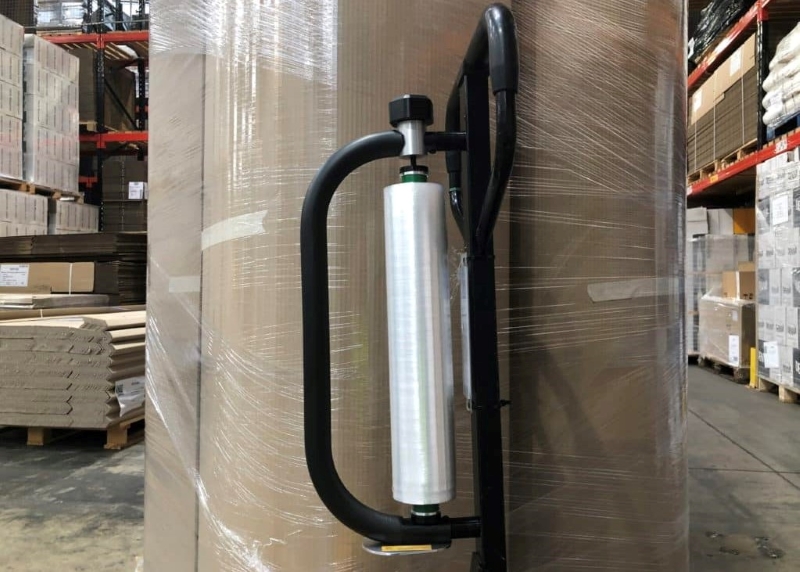
| Feature | Plastic Shrink Wrap | Paper Shrink Wrap |
|---|---|---|
| Material | Made from plastic (often PVC or PE) | Made from recycled paper |
| Environmental Impact | Non-biodegradable, contributes to plastic waste | Biodegradable, compostable, and recyclable |
| Strength | Strong and stretchable | Less stretchable, but durable with proper use |
| Protection | Provides secure protection from dust and moisture | Offers similar protection, but more suitable for dry environments |
| Applications | Widely used in retail packaging and shipping | Often used for packaging of products like organic goods, foods, or in eco-conscious retail sectors |
Recycling plastic pallet wrap is an essential process for reducing its environmental impact and reusing the material in the production of new products.
Incorporating recycled content, whether in recycled content pallet wrap or through plastic pallet wrap recycling, is a vital step toward a more sustainable packaging future. As manufacturers continue to innovate with biodegradable materials and recyclable solutions, the packaging industry can make significant strides toward reducing its environmental footprint.
As businesses shift toward more sustainable packaging solutions, it’s important to understand the different types of eco friendly pallet wraps available. Below is a comparison of three popular options: recycled pallet wrap, biodegradable wrap, and reusable wrap. Each type offers unique benefits, and the choice largely depends on the specific needs of the business and the environmental goals of the company.
| Feature | Recycled Pallet Wrap | Biodegradable Pallet Wrap | Reusable Pallet Wrap |
|---|---|---|---|
| Material Composition | Made from post-consumer recycled plastic | Made from natural polymers (e.g., PLA, starch) | Made from durable, high-quality plastic or fabric |
| Environmental Impact | Reduces plastic waste by reusing existing materials | Breaks down naturally in composting environments | Minimizes waste by being reused multiple times |
| Performance | Strong, stretchable, and secure like conventional plastic | Less stretchable, suitable for light-to-medium loads | Extremely durable, can withstand repeated use |
| Recyclability | Can be recycled again after use through recycling pallet shrink wrap programs | Typically not recyclable, must be composted | Can be used multiple times before needing to be recycled |
| Best Applications | Ideal for industries that handle large volumes and need cost-effective, eco-friendly solutions | Best for light-duty applications, particularly for organic goods or packaging sensitive to plastics | Great for companies with consistent, predictable packaging needs and high volumes of shipments |
Recycled Pallet Wrap is ideal for industries with high-volume shipments that still want to make a positive environmental impact by reducing plastic waste. It is a versatile and cost-effective solution for businesses looking for an eco-friendly alternative to traditional plastic wrap without compromising performance.
Biodegradable Pallet Wrap is best for industries focused on organic or environmentally sensitive products, such as food packaging, or those looking to reduce plastic entirely from their operations. However, it may not be suitable for industries that require heavy-duty packaging solutions, as it’s typically less durable than recycled options.
Reusable Pallet Wrap is the best choice for businesses that want to minimize waste while still providing strong, reliable protection. It’s ideal for industries where packaging materials can be used repeatedly, such as in warehouses, distribution centers, or businesses with a steady flow of goods that don’t change frequently.
Pallet film wrap is a widely used packaging solution, and as sustainability becomes more important, the industry is seeing shifts toward more eco-friendly alternatives. Here’s how traditional pallet film wrap compares to its eco-friendly counterparts.
| Feature | Traditional Pallet Film Wrap | Eco-friendly Pallet Film Wrap |
|---|---|---|
| Material | Typically polyethylene (PE) | Recycled plastics, biodegradable materials, or paper |
| Environmental Impact | Contributes to plastic waste in landfills | Reduces plastic waste, biodegradable, recyclable |
| Strength and Durability | Strong and stretchable, suitable for heavy-duty use | Typically less stretchable, may be less durable for heavy loads |
| Recyclability | Limited recyclability, requires special programs | Recycled pallet wrap can be recycled through specialized programs, biodegradable options compostable |
| Best Use | High-volume, heavy-duty applications | Businesses focused on sustainability or those with light-to-medium loads |
By exploring these different types of sustainable pallet wraps, businesses can choose the right solution that balances environmental impact, performance, and cost-efficiency. Whether opting for recycled pallet wrap, biodegradable options, or reusable wraps, companies can make a significant contribution to reducing waste and supporting a more sustainable packaging future.
Recycled pallet wrap is an eco-friendly packaging choice, but selecting the right product requires careful evaluation. This guide is divided into two parts: what to know before buying and precautions to take during and after purchase.
Material Composition
Understand the percentage of recycled content in the wrap. Higher recycled content often translates to greater environmental benefits but may vary in performance.
Intended Use
Determine whether you need hand-grade, machine-grade, or specialty wraps like pre-stretched or heavy-duty options based on your packaging operations.
Load Type and Weight
Consider the weight and nature of the items you’ll be wrapping. Heavier loads may require thicker and stronger wraps.
Stretch and Cling Properties
Check the stretchability and cling performance to ensure the wrap can secure your goods effectively.
Eco-Certifications
Look for certifications like post-consumer recycled content verification or marine-polluted plastic use to ensure the product meets your sustainability standards.
During Purchase
After Purchase
By addressing these considerations, you can choose the most effective recycled pallet wrap for your needs while supporting environmental goals.
Yes, pallet wrap can often be recycled, but it depends on the type of material used and the recycling facilities available in your area. Most pallet wraps are made from Low-Density Polyethylene (LDPE), which is a recyclable material. However, not all recycling centers accept LDPE, so it’s important to check with your local facility. To ensure the wrap can be recycled, it should be clean and free of any adhesive labels or contaminants. Recycling pallet wrap helps reduce environmental impact by reducing landfill waste and saving resources needed to produce new plastic materials. If recycling options are limited, consider seeking out specialized recycling programs dedicated to LDPE or think about reusing the wrap wherever possible.
There are several alternatives to traditional pallet wrapping that can be more environmentally friendly or suitable for different logistics needs. Reusable options such as pallet bands or stretch nets can be effective in securing loads. Pallet bands, made from durable rubber or other materials, provide tension to keep items in place without single-use plastic waste. Stretch nets are similar, offering elasticity to secure loads while being reusable. Another option includes using strapping or tie-downs made from recyclable materials. For companies focused on sustainability, biodegradable or compostable wraps made from plant-based materials may be suitable. These provide the same security as traditional wraps but break down more easily after disposal. Exploring these alternatives can help reduce environmental impact while still ensuring safe and efficient transportation.
The primary difference between cling wrap and pallet wrap lies in their intended uses and material composition. Cling wrap, commonly used in kitchens, is a thin, flexible plastic film designed to cling tightly to food items or containers and is typically made of Polyvinyl Chloride (PVC) or LDPE. It’s transparent, stretchable, and equipped to preserve food freshness. On the other hand, pallet wrap, also known as stretch wrap, is a more robust material typically used in industrial settings to secure goods on pallets for transport. Made primarily from LDPE, pallet wrap is designed to stretch around large bundles of items, providing stability and protection against shifting during shipping. It is generally thicker and stronger than cling wrap, and its elasticity allows it to tightly hold heavy or irregularly shaped loads.
A pallet wrapper is typically called a stretch wrap machine. This device automates the process of applying stretch film to a pallet load, ensuring a consistent and secure wrap. Stretch wrap machines come in various forms, including turntable, rotary arm, and orbital styles, each designed to accommodate different sizes and types of loads. Using a stretch wrap machine not only enhances the efficiency of pallet wrapping but also improves the load stability and safety of the goods during transit. These machines are critical for businesses that handle large volumes of goods, as they can considerably speed up the packaging process while reducing manual labor and the potential for human error.
Recycled pallet wrap is generally more affordable than wraps made from virgin materials, with prices varying based on the wrap’s thickness, size, and the percentage of recycled content. On average, a roll of recycled pallet wrap can cost between $10 to $25 per roll for standard sizes (around 18 inches wide and 1,500 feet long). Bulk purchases or wholesale options may lower the price per roll. Heavier-duty wraps or those with higher recycled content can cost more, but they often provide better environmental value.
While the initial cost of recycled pallet wrap may be slightly higher than conventional options in some cases, the investment supports sustainability goals by reducing plastic waste and promoting a circular economy. Companies can often offset these costs through improved brand reputation or by meeting eco-conscious customer expectations. Prices may fluctuate depending on market demand and the availability of recycled materials.
The time it takes to wrap a pallet using recycled pallet wrap depends on factors like the pallet’s size, the worker’s skill level, and whether manual or machine-assisted wrapping is used. For manual wrapping, it generally takes 2 to 5 minutes to secure a standard pallet, with recycled wrap performing similarly to traditional materials in terms of stretch and ease of use.
If using a pallet wrapping machine, the process is significantly faster, typically taking 30 seconds to 1 minute per pallet. Recycled pallet wrap is engineered to work with most wrapping machines, offering comparable efficiency while reducing environmental impact.
Factors such as load stability and the number of layers required also influence wrapping time. Recycled wrap’s durability and stretch properties ensure that time efficiency is maintained, proving it is both an eco-friendly and practical choice for securing goods during shipping and storage.
Recycling plastic pallet wrap (typically LDPE #4) requires proper preparation and access to specialized recycling programs. Here’s a step-by-step guide:
Clean the Wrap: Remove dirt, labels, and adhesives. Contaminated film is often rejected.
Separate by Type: Ensure it’s pure LDPE—mixed plastics (e.g., PVC straps) must be removed.
Compact for Storage: Use a baler to compress film into dense cubes (reduces transport costs).
Find a Recycler:
Retail Drop-Off: Stores like Lowe’s or Target accept clean stretch film.
Industrial Programs: Partner with companies like Trex or TerraCycle for bulk recycling.
Local MRFs: Check if municipal recycling facilities accept LDPE film (many do via WRAP’s Film Recycling Directory).
Closed-Loop Recycling: Work with suppliers (e.g., Berry Global) that reprocess used wrap into new film.
Note: Avoid curbside bins—most programs reject loose plastic film due to machinery tangling risks.
If recycling isn’t viable, consider these alternatives:
Reuse:
Reload light/medium pallets.
Protect outdoor equipment (e.g., grills, furniture) from dust/rain.
Upcycle:
DIY greenhouse covers or temporary tarps.
Cushion fragile items during moves.
Industrial Take-Back Programs:
Amazon’s Frustration-Free Packaging: Returns used wrap for recycling.
Walmart’s Project Gigaton: Partners with suppliers to reclaim film.
Waste-to-Energy:
Facilities like Covanta convert non-recyclable film to electricity (EPA-regulated).
Landfill Last Resort:
If unavoidable, ensure disposal complies with local regulations (e.g., CA’s SB 1383 organics ban).
Pro Tip: Switch to biodegradable wraps (e.g., Hi-Cone’s EcoGuard) for non-recyclable scenarios to reduce long-term environmental harm.

My name is James Thompson, and I’m the editor of this website dedicated to Stretch Film, Pallet Wrap, and Stretch Wrap products.
My passion for packaging began when I noticed the challenges companies face in securing their products efficiently for transportation and storage. This inspired me to delve deep into the world of stretch films and pallet wraps, exploring the latest technologies and best practices.
I aim to provide valuable insights, practical tips, and up-to-date industry trends to assist you in making informed decisions. Whether you’re a small business owner or part of a large corporation, my goal is to support you in optimizing your operations and ensuring your products reach their destination safely.
Thank you for visiting, and I look forward to accompanying you on your journey toward better packaging solutions.
Comments are closed